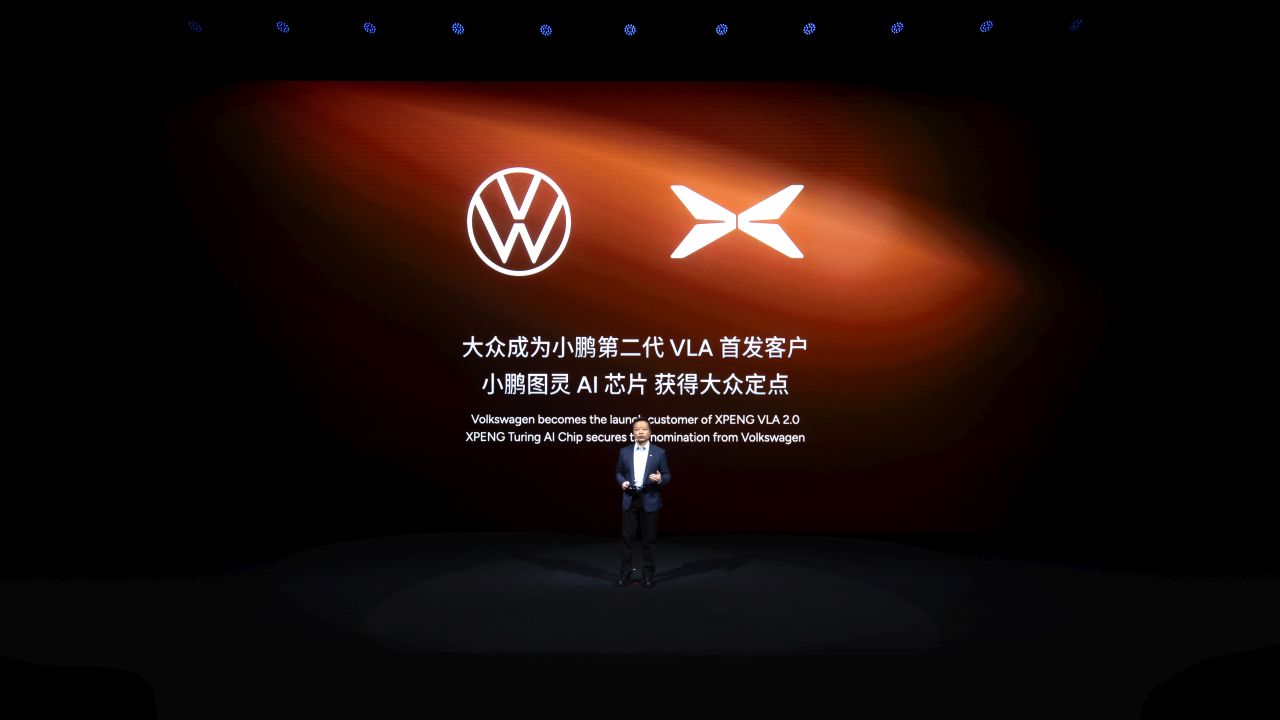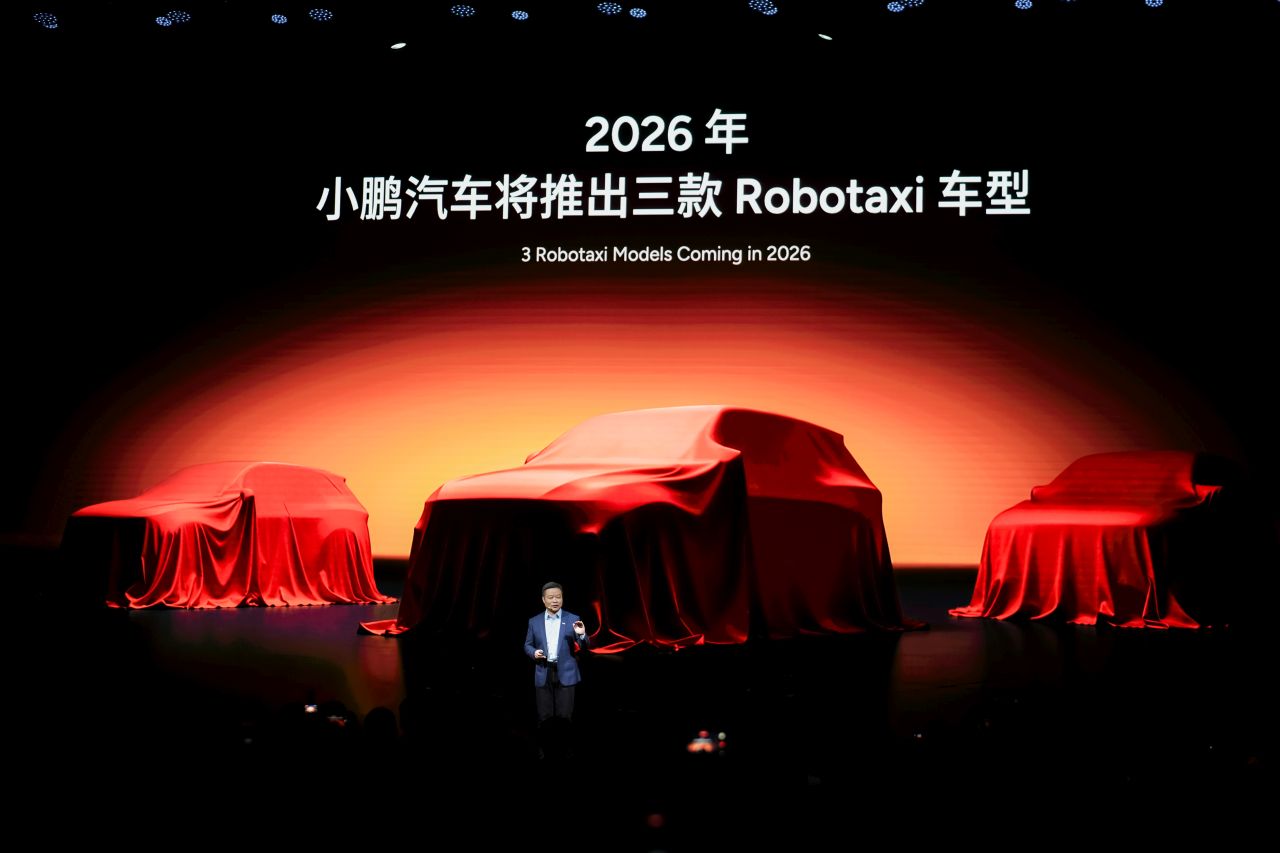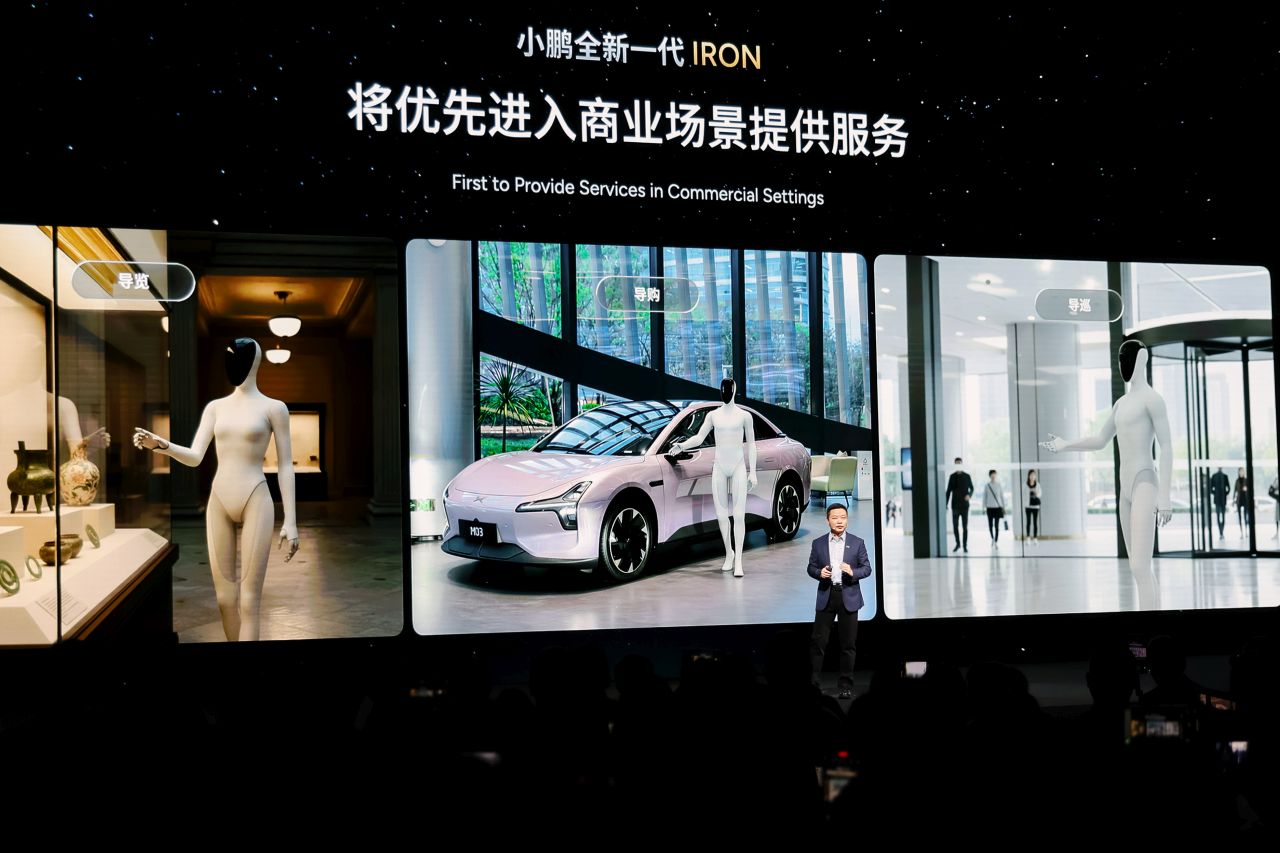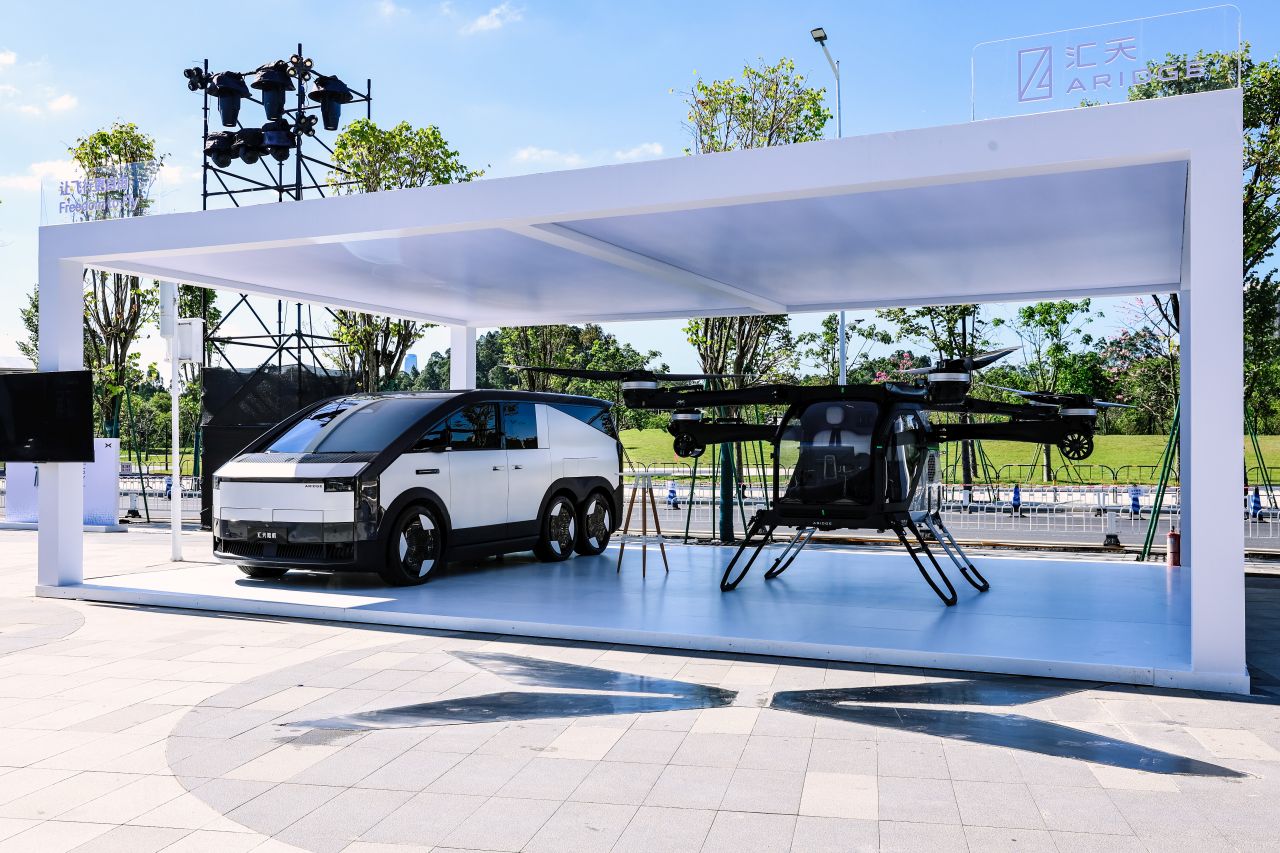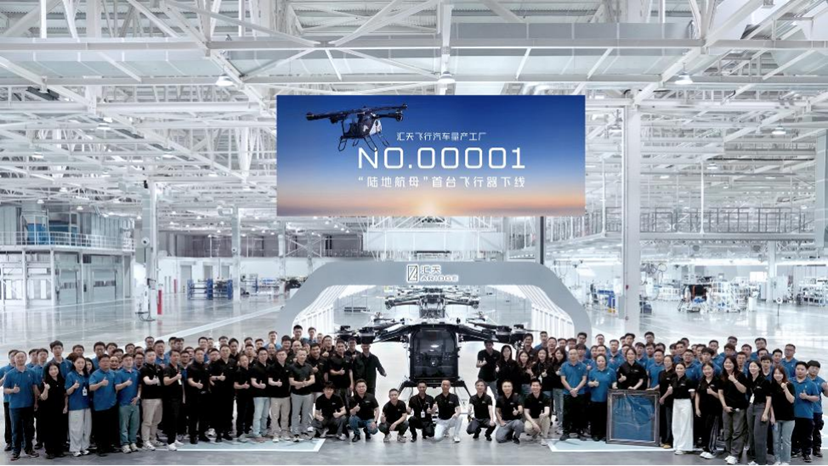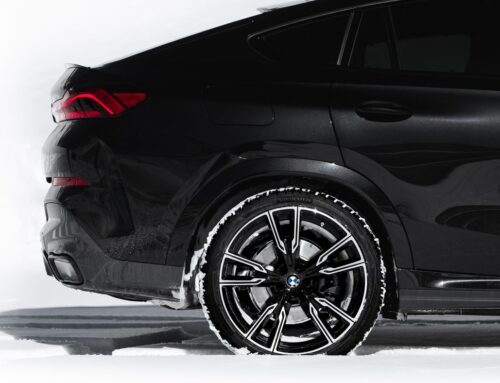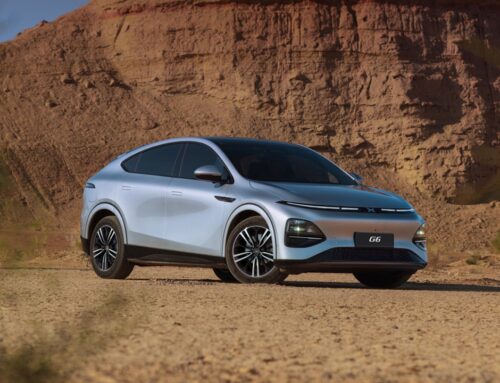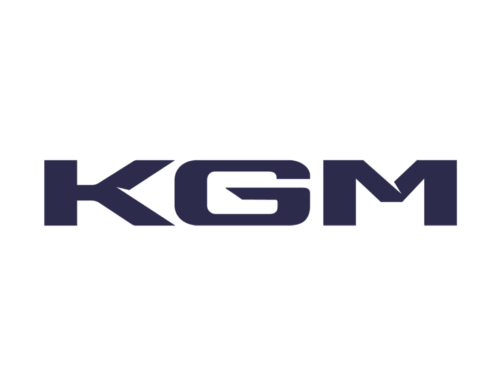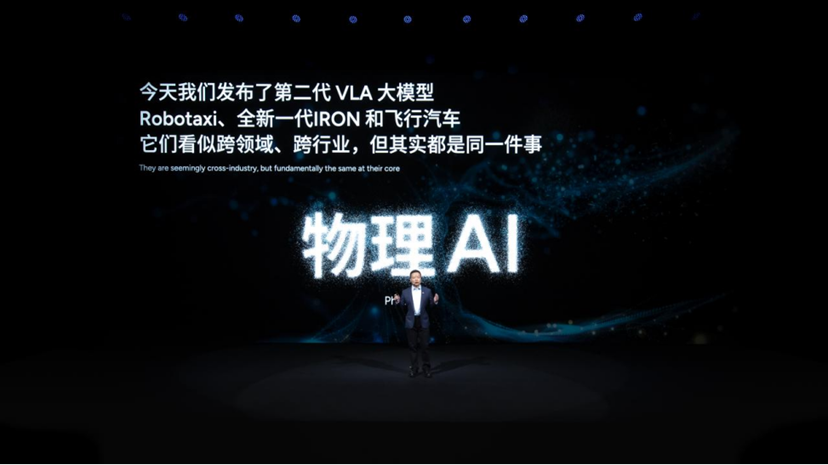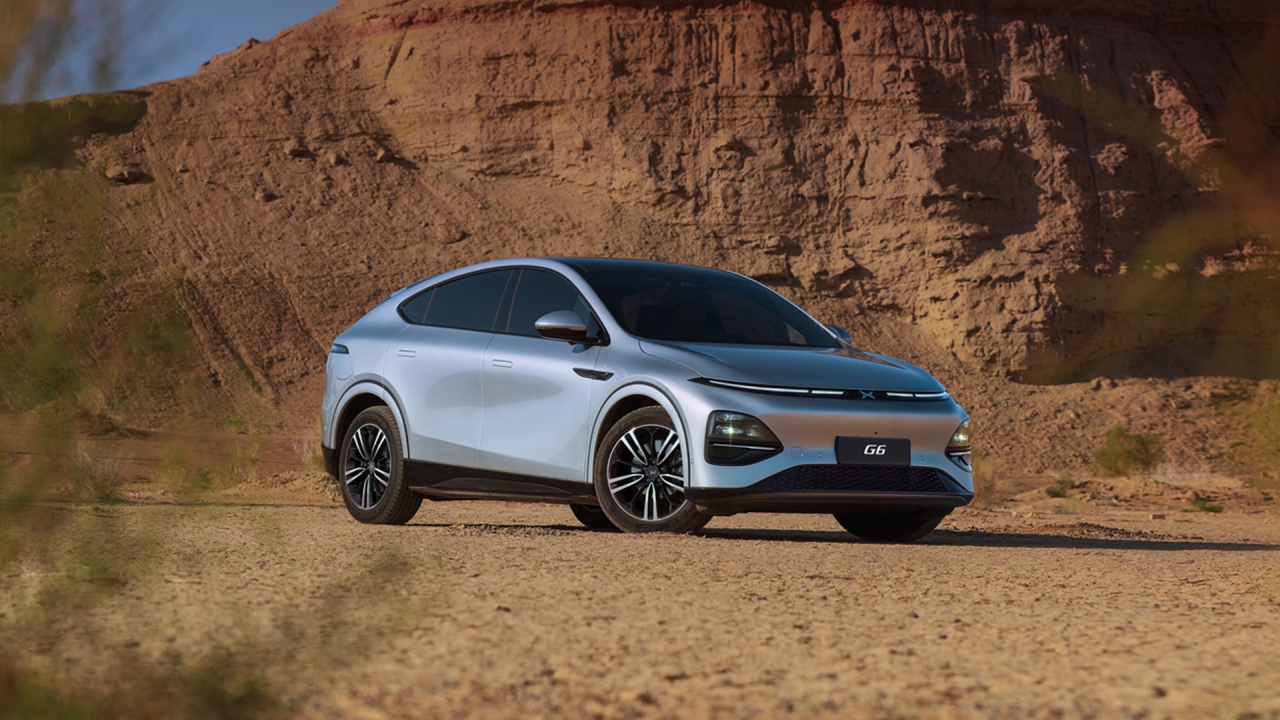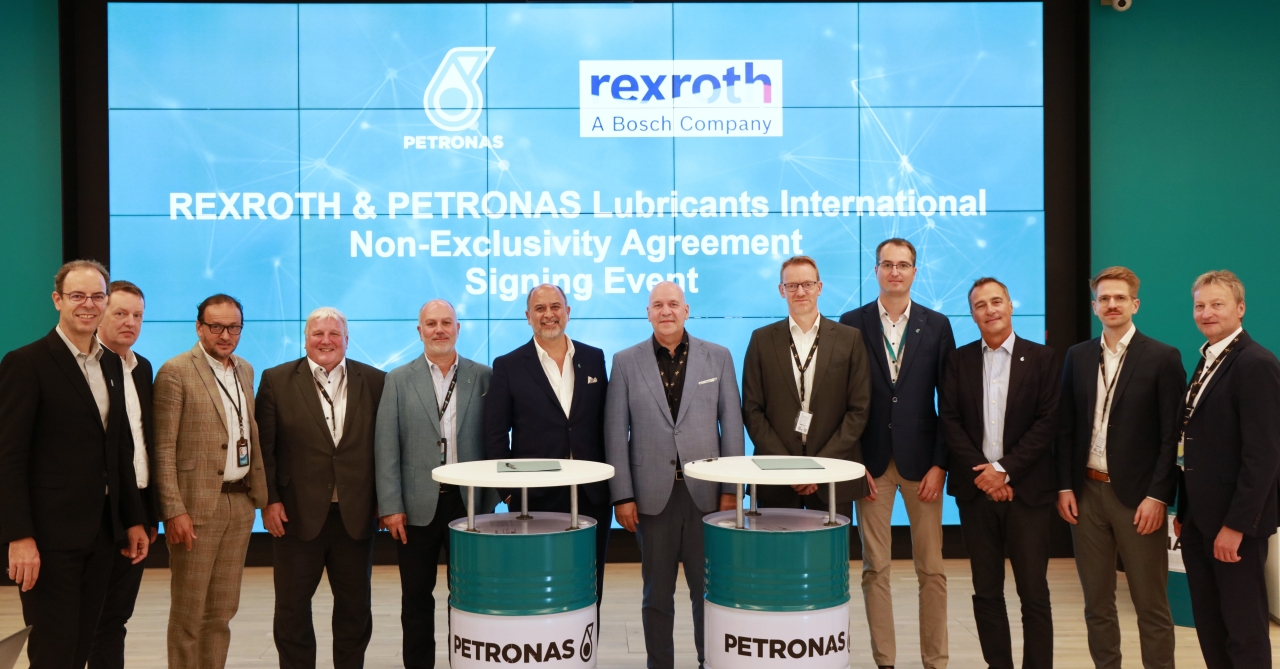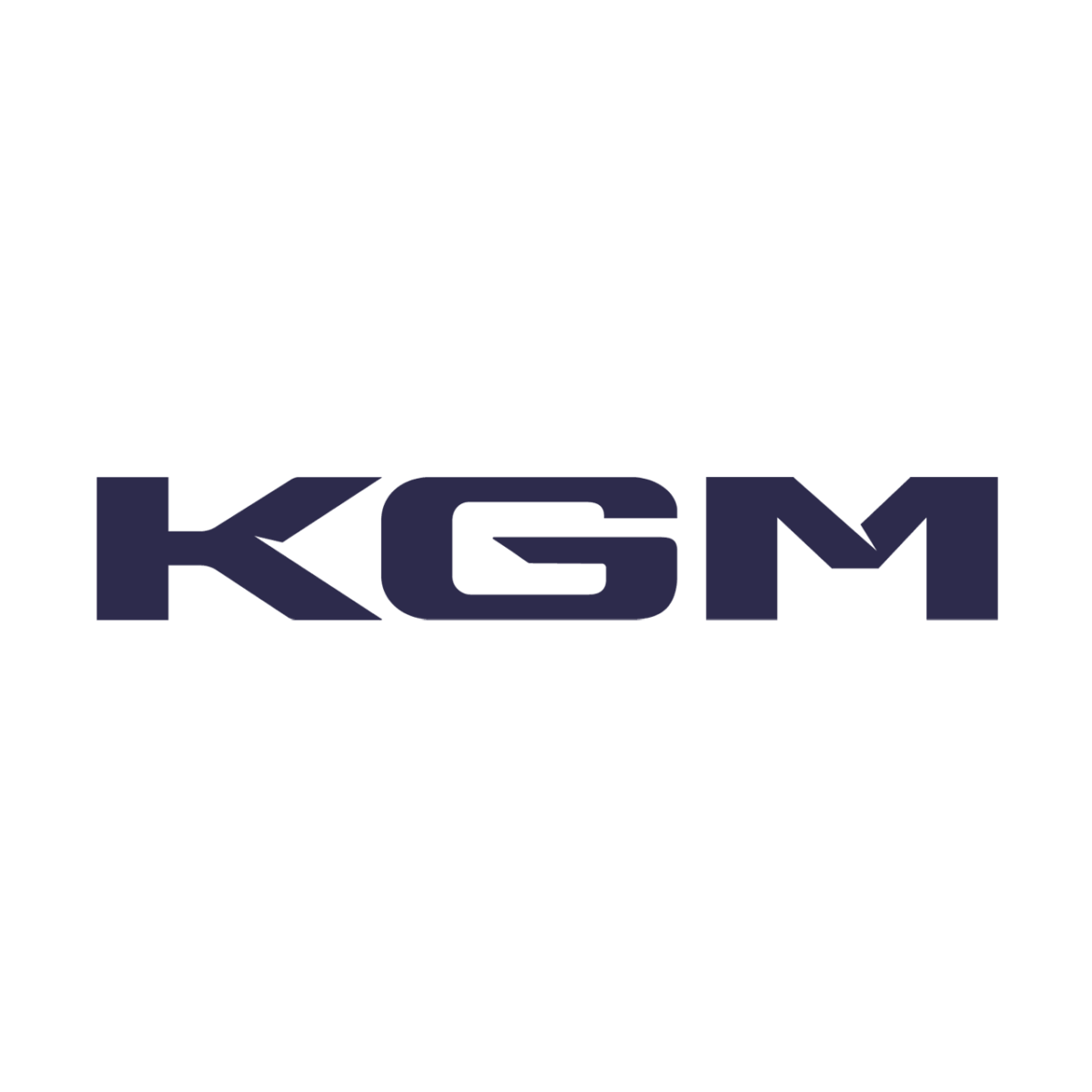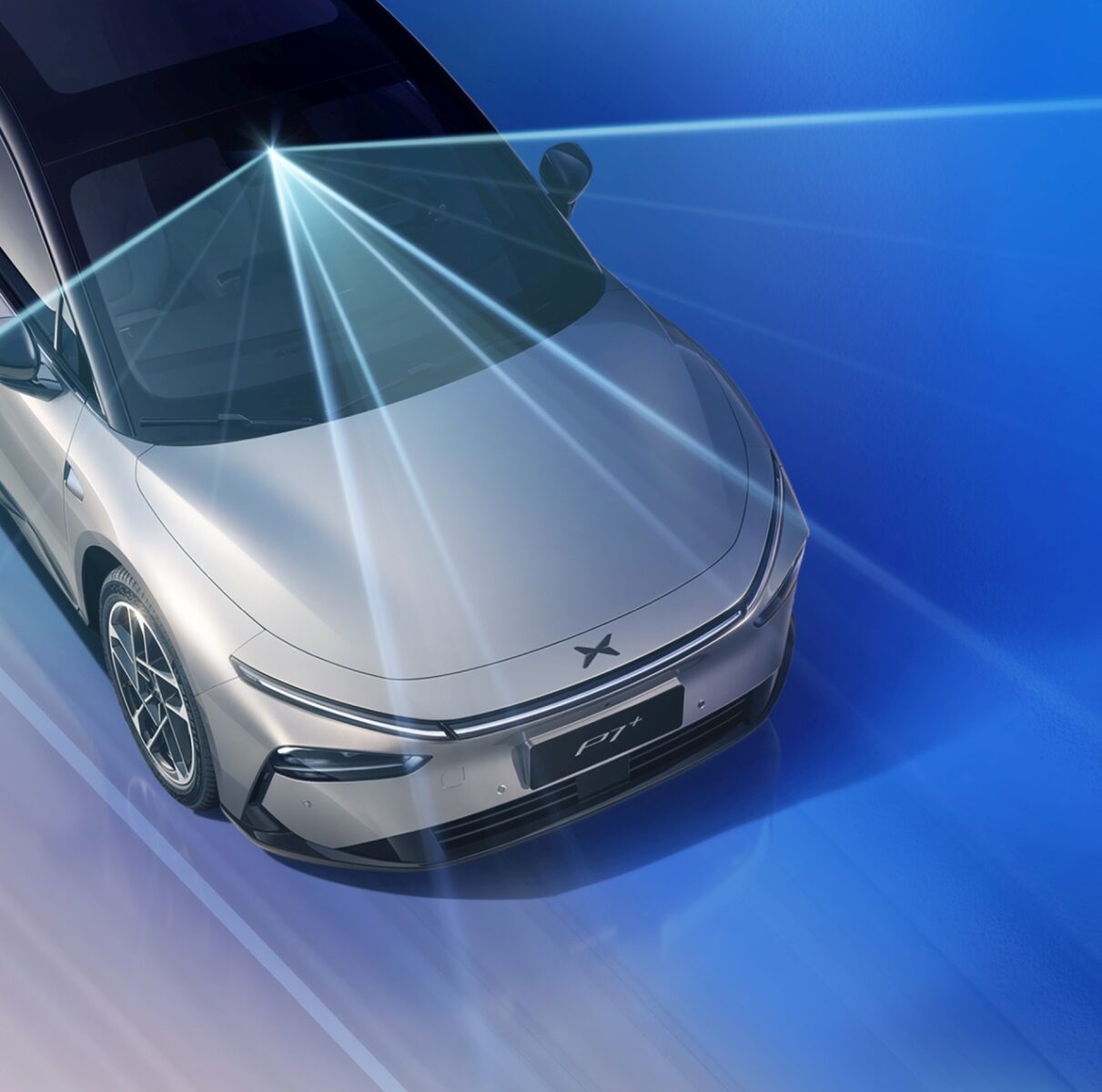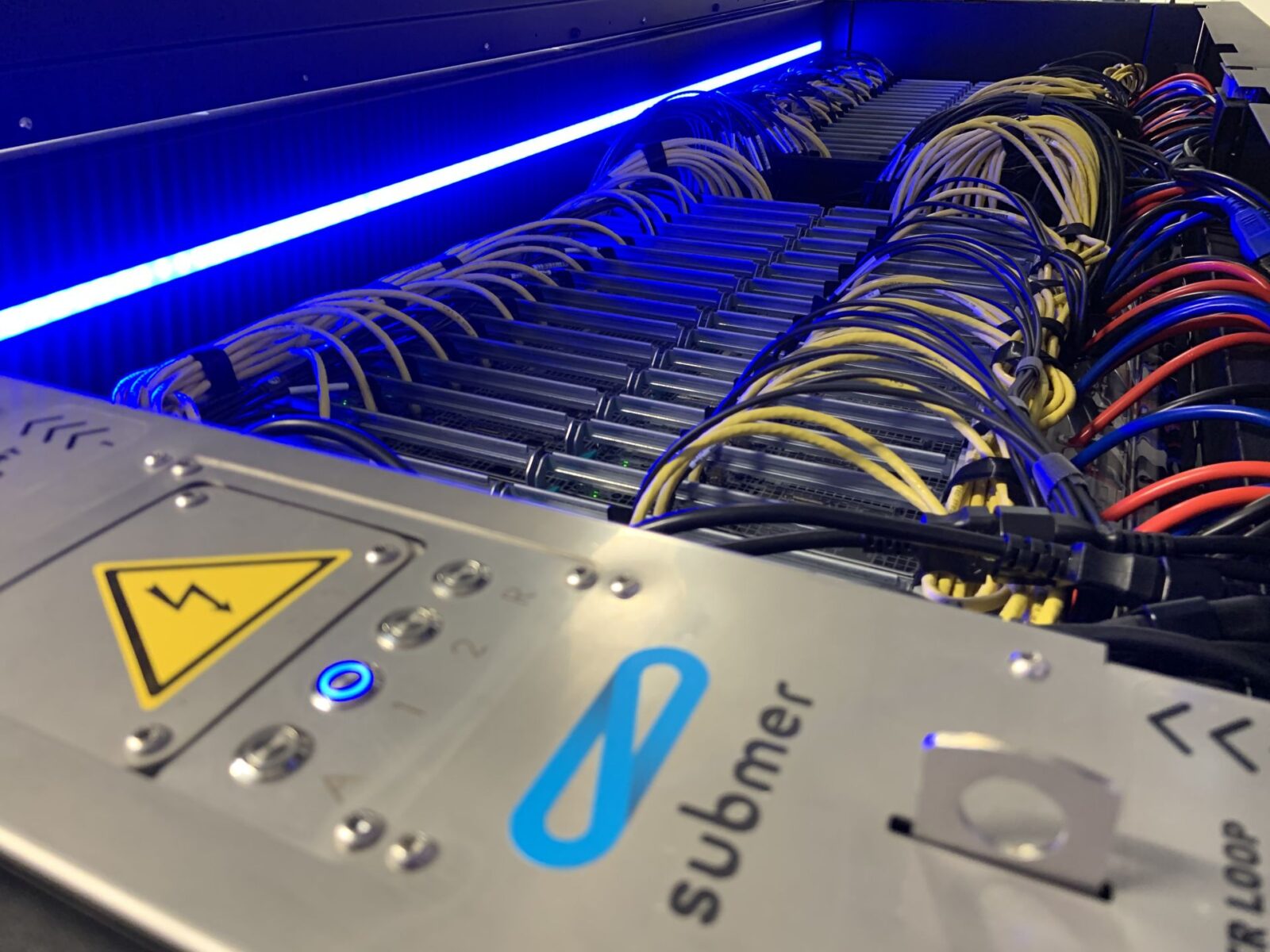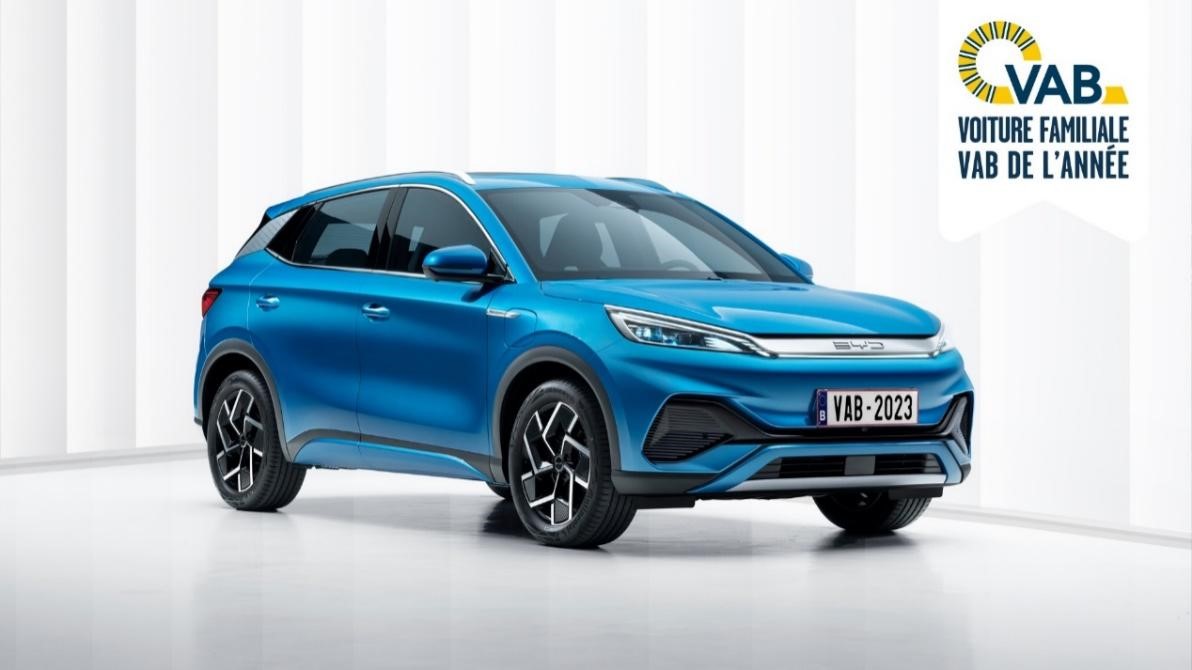- The only Chinese company to achieve a full-stack Physical AI system development: XPENG elevates its positioning to a ‘Global Embodied Intelligence Company’ by simultaneously unveiling the VLA 2.0 Large Model and three Embodied Intelligence products
- XPENG launches its first mass-production Robotaxi. Pilot production and operations are scheduled for 2026. The new ‘Robo’ intelligent trim supports personal and commercial use.
- XPENG IRON Next-Gen officially unveiled: The industry’s most advanced humanoid robot with a human-like spine integrates three Turing AI chips for 2,250 TOPS and the ‘VLT + VLA + VLM’ combination for the three superior intelligences: conversation, walking, and interaction.
- The ‘A868’ hybrid tilt-rotor flying car is revealed; ARIDGE accelerates the development of low-altitude mobility with two main parallel flight systems.
- Volkswagen is the strategic launch partner for VLA 2.0, Amap becomes XPENG’s first global ecosystem partner for Robotaxi, while Baosteel Stock is XPENG’s first ecosystem partner for the IRON robot.
HIGHLIGHTS | XPENG AI Day 2025: The Advent of Embodied Intelligence
The recent XPENG AI Day 2025, held in Guangzhou, marked a turning point for the company, which officially repositioned itself as an “explorer of mobility in the world of Physical AI and a global embodied intelligence company”. This shift reflects XPENG’s ambition to fully integrate artificial intelligence with the physical world by developing a proprietary full-stack Physical AI system. The event demonstrated that this vision is not theoretical, but translates into four tangible applications with clear roadmaps for mass production.
The Revolution of Large Models: VLA 2.0
At the core of XPENG’s strategy is the VLA 2.0 Large Model, defined as the “operating system of the Physical AI world”. This model introduces a revolutionary new paradigm: “Vision – Implicit Token – Action”, which eliminates the need for intermediate “language translation”, allowing for direct, end-to-end generation from visual signals to action commands.
VLA 2.0 is the first physical world large model, with parameters in the order of billions, to be installed on production vehicles (thanks to the 2,250 TOPS Turing AI chip). This advancement enables drastically improved intelligent driving capabilities, such as the “Narrow Road NGP” function and “Navigation-Free Automated Driving Assistance” (Super LCC), which also demonstrate emergent capabilities like proactively responding to complex gestures and traffic signals. The full roll-out of VLA 2.0 is scheduled for the first quarter of 2026. Attesting to its global importance, XPENG announced a strategic collaboration with Volkswagen, the launch customer and a partner for the co-building of the VLA 2.0 open-source ecosystem.
Transformation of Mobility with Physical AI
Physical AI extends beyond personal vehicles to embrace three key embodied intelligence products, all aimed at entering people’s daily lives.
1. The Robotaxi of the Future
XPENG unveiled the XPENG Robotaxi, designed to be China’s first mass-produced, full-stack developed Robotaxi. Slated for production and pilot operations in 2026, its key features include:
- A pure vision-based architecture (excluding lidar and HD maps), ensuring global deployment and versatility.
- A computing power of 3,000 TOPS (from four Turing chips) and a dual-redundancy hardware architecture for maximum safety.
- A new external interaction system, including a sun visor display, which allows for “communication and expression” with pedestrians.
Simultaneously, the ‘Robo’ intelligent trim will be launched for privately owned vehicles, sharing the Robotaxi’s hardware. Amap (Gaode) has been announced as the first global partner in the Robotaxi ecosystem.
2. The Ultra-Realistic Humanoid IRON Next-Gen
XPENG revealed its vision of ‘extreme anthropomorphism’ with IRON Next-Gen, the industry’s most advanced humanoid robot. Its structure incorporates a humanoid spine, bionic muscles, and flexible skin, giving it natural and fluid movements (82 degrees of freedom). Equipped with three Turing AI chips and 3,000 TOPS of computing power, IRON integrates the ‘VLT + VLA + VLM’ combination for the three superior intelligences: conversation, walking, and interaction. The goal is to achieve large-scale mass production by the end of 2026, starting with commercial scenarios. Baosteel Stock will be the first partner for exploring complex industrial applications.
3. Aerial Expansion: ARIDGE Flying Cars
XPENG, through its subsidiary ARIDGE, is accelerating the development of the ‘low-altitude economy’ with two parallel systems:
- The ‘A868’ hybrid tilt-rotor flying car: A 6-seater aircraft for long-distance business travel (estimated range of 500 km), currently in the flight verification phase.
- The ‘Land Aircraft Carrier’: Nearing mass production (over 7,000 global orders), this is the first aircraft featuring single-stick control and full-domain Safety Redundancy, intended for individual mobility.
The production facility has already commenced trial production, with the aim of achieving large-scale mass production of the Land Aircraft Carrier by 2026. To accelerate adoption, XPENG will collaborate with the Dunhuang Municipal Government to launch China’s first autonomous low-altitude tourism route in 2026.
In summary, XPENG AI Day 2025 crystallised the company’s transition into a pioneer of Embodied Intelligence, simultaneously presenting advanced AI foundations (VLA 2.0) and their practical application across three mobility and robotics vectors with concrete commercialisation plans by 2026.
Watch the press conference in streaming >
Download the complete press kit in Italian >
Guangzhou, China, 5 Novembrer 2025
Anice, Media Relations XPENG Italy



